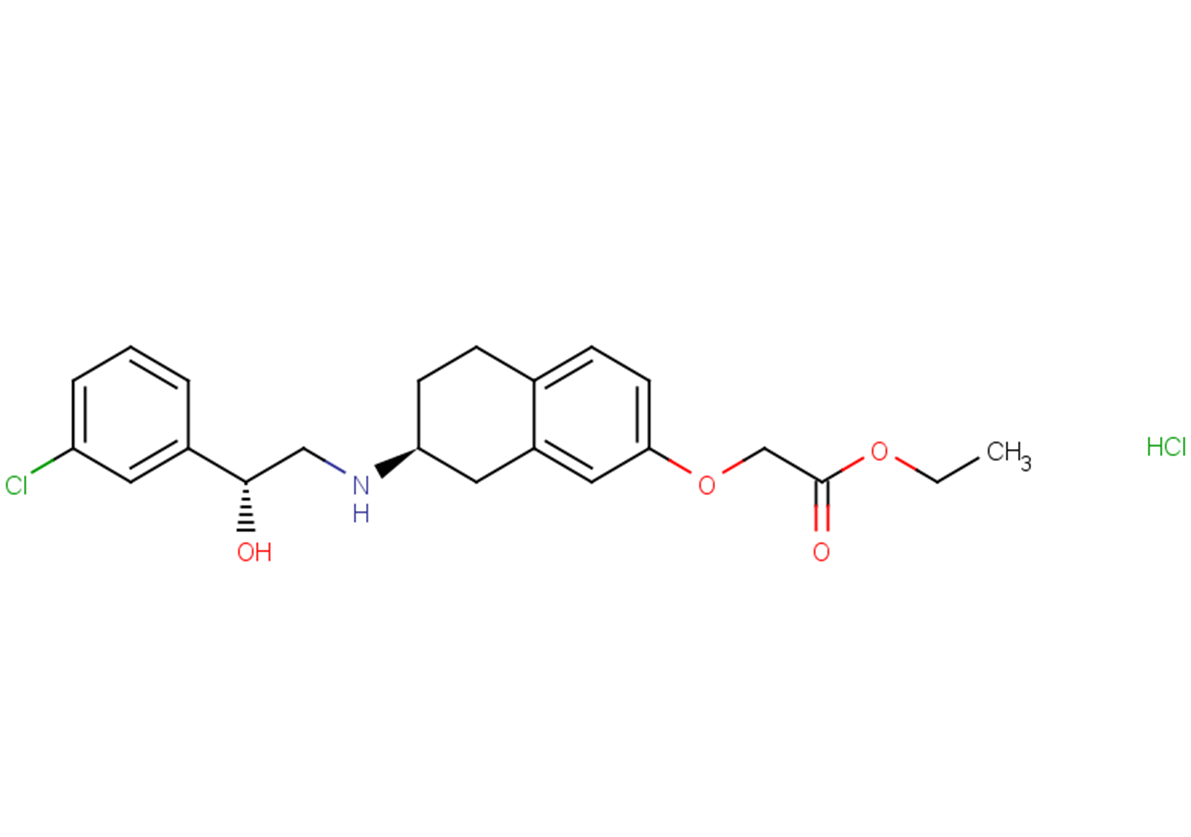Powder: -20°C for 3 years | In solvent: -80°C for 1 year


Amibegron hydrochloride is a selective β3-adrenoceptor agonist (EC50: 3.5 nM for β-adrenoceptor in rat colon). It has anxiolytic and antidepressant activity.

| Pack Size | Availability | Price/USD | Quantity |
|---|---|---|---|
| 25 mg | 6-8 weeks | $ 931.00 | |
| 50 mg | 6-8 weeks | $ 1,210.00 | |
| 100 mg | 6-8 weeks | $ 1,830.00 |
| Description | Amibegron hydrochloride is a selective β3-adrenoceptor agonist (EC50: 3.5 nM for β-adrenoceptor in rat colon). It has anxiolytic and antidepressant activity. |
| Targets&IC50 | β-adrenoceptor: 499 nM , β-adrenoceptor:(EC50)3.5 nM |
| In vitro | Amibegron hydrochloride (SR 58611A) is a selective β-adrenoceptor agonist (EC50: 499 nM in rat uterus) [1]. Amibegron hydrochloride shows little effect on β1- and β2-adrenoceptors, 5-HT uptake, noradrenaline (NA) uptake, and dopamine (DA) uptake from rat brain tissue (IC50s: 4.6 and 1.2, 0.58, 2.5 and 3.2 μM). It exhibits no effect on 5-HT1A, 5-HT2, MAO-A, and MAO-B (IC50 > 10 μM) [2]. |
| In vivo | Amibegron hydrochloride (0.1 to 0.3 mg/kg, i.p.) potentiates the toxicity produced by yohimbine in mice. Amibegron hydrochloride (0.6 and 2 mg/kg, i.p.) is also active in the learned helplessness model of antidepressant-like activity in rats [2]. Amibegron hydrochloride (3 and 10 mg/kg, p.o.) increases the synthesis of 5-HT and tryptophan (Trp) levels in several rodent brain areas such as cortex, hippocampus, hypothalamus. In addition, Amibegron hydrochloride (10 mg/kg, p.o.) promotes the release of 5-HT in the rat prefrontal cortex. Systemic (3 mg/kg, i.v.) or chronic administration of SR58611A (10 mg/kg, p.o.) does not affect the activity of serotonergic neurons in the rat dorsal raphe nucleus [3]. |
| Synonyms | SR 58611A |
| Molecular Weight | 440.36 |
| Formula | C22H27Cl2NO4 |
| CAS No. | 121524-09-2 |
Powder: -20°C for 3 years | In solvent: -80°C for 1 year
You can also refer to dose conversion for different animals. More
bottom
Please see Inhibitor Handling Instructions for more frequently ask questions. Topics include: how to prepare stock solutions, how to store products, and cautions on cell-based assays & animal experiments, etc.
Amibegron hydrochloride 121524-09-2 Others SR 58611A Amibegron Hydrochloride inhibitor inhibit
